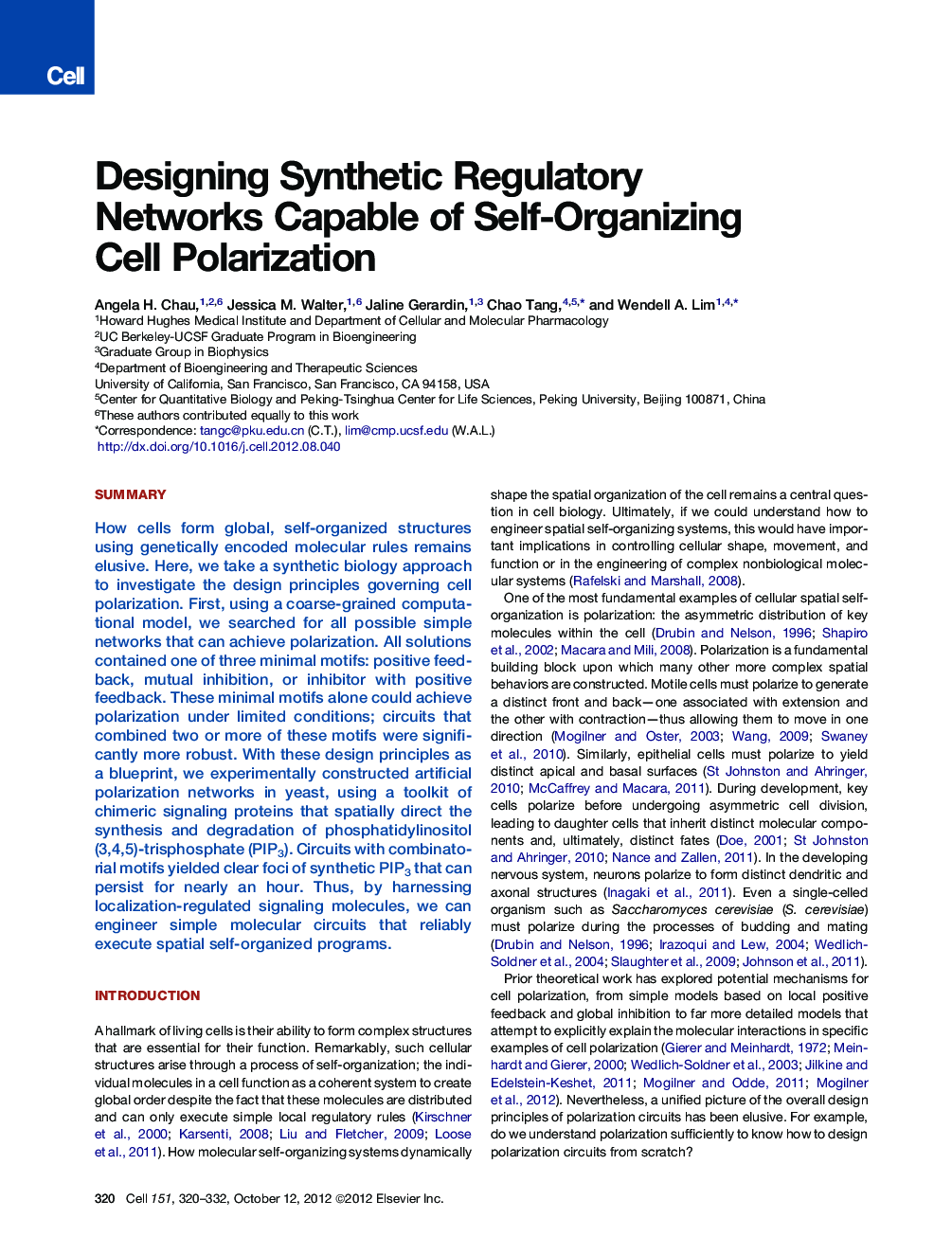| Article ID | Journal | Published Year | Pages | File Type |
|---|---|---|---|---|
| 2035594 | Cell | 2012 | 13 Pages |
SummaryHow cells form global, self-organized structures using genetically encoded molecular rules remains elusive. Here, we take a synthetic biology approach to investigate the design principles governing cell polarization. First, using a coarse-grained computational model, we searched for all possible simple networks that can achieve polarization. All solutions contained one of three minimal motifs: positive feedback, mutual inhibition, or inhibitor with positive feedback. These minimal motifs alone could achieve polarization under limited conditions; circuits that combined two or more of these motifs were significantly more robust. With these design principles as a blueprint, we experimentally constructed artificial polarization networks in yeast, using a toolkit of chimeric signaling proteins that spatially direct the synthesis and degradation of phosphatidylinositol (3,4,5)-trisphosphate (PIP3). Circuits with combinatorial motifs yielded clear foci of synthetic PIP3 that can persist for nearly an hour. Thus, by harnessing localization-regulated signaling molecules, we can engineer simple molecular circuits that reliably execute spatial self-organized programs.
Graphical AbstractFigure optionsDownload full-size imageDownload high-quality image (299 K)Download as PowerPoint slideHighlights► Computational model identified three minimal network motifs for cell polarization ► Combining minimal motifs increased robustness of polarization to parameter variation ► PIP3 polarization networks were designed using engineered chimeric signaling proteins ► Synthetic networks combining minimal motifs yield strong, sustained PIP3 poles
